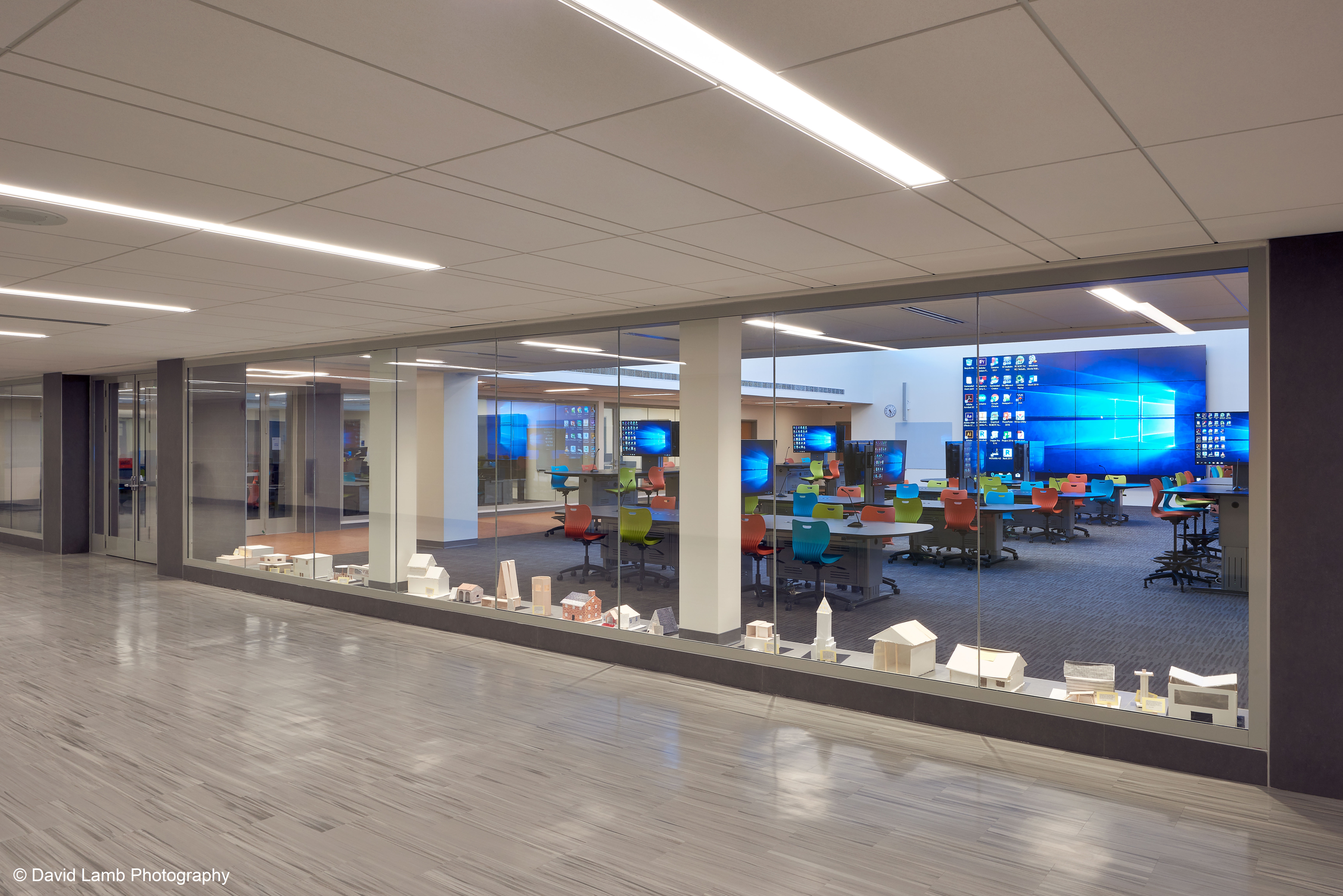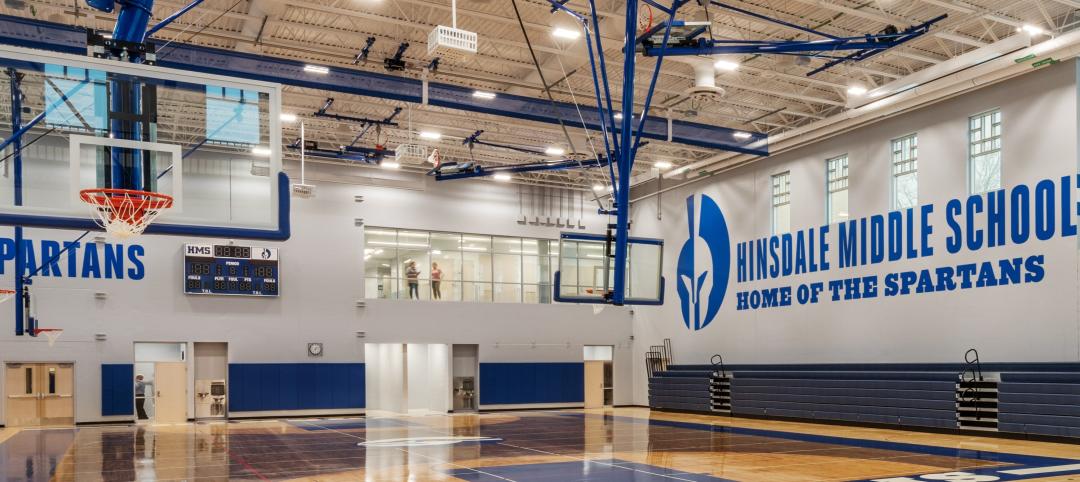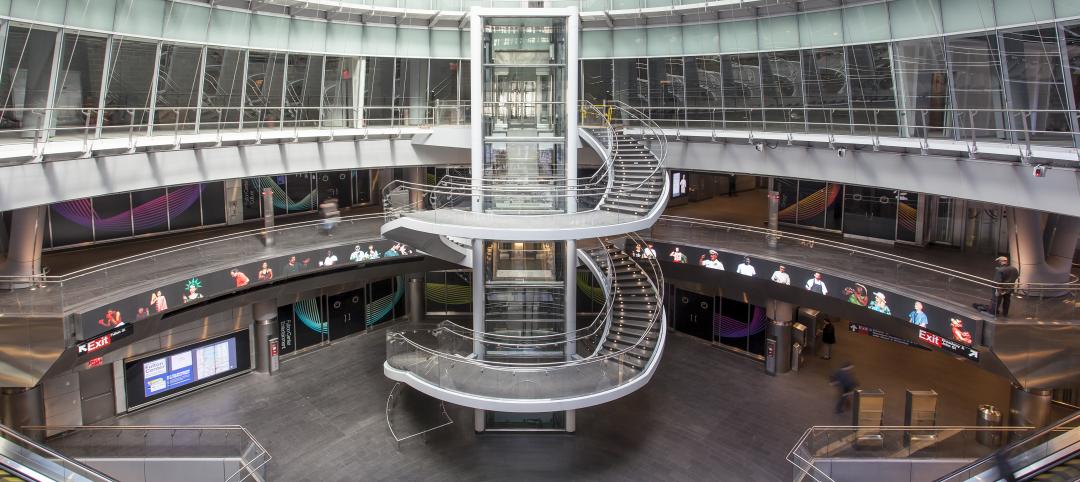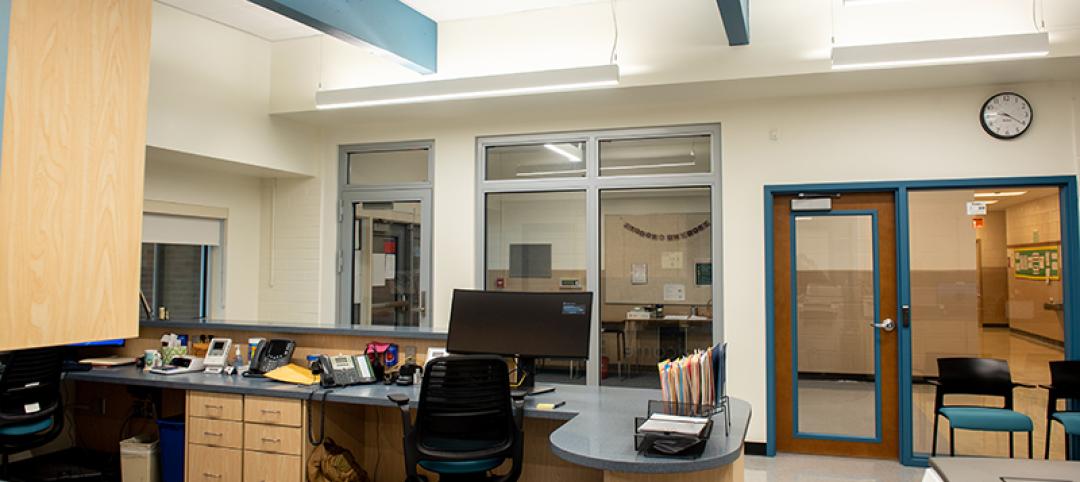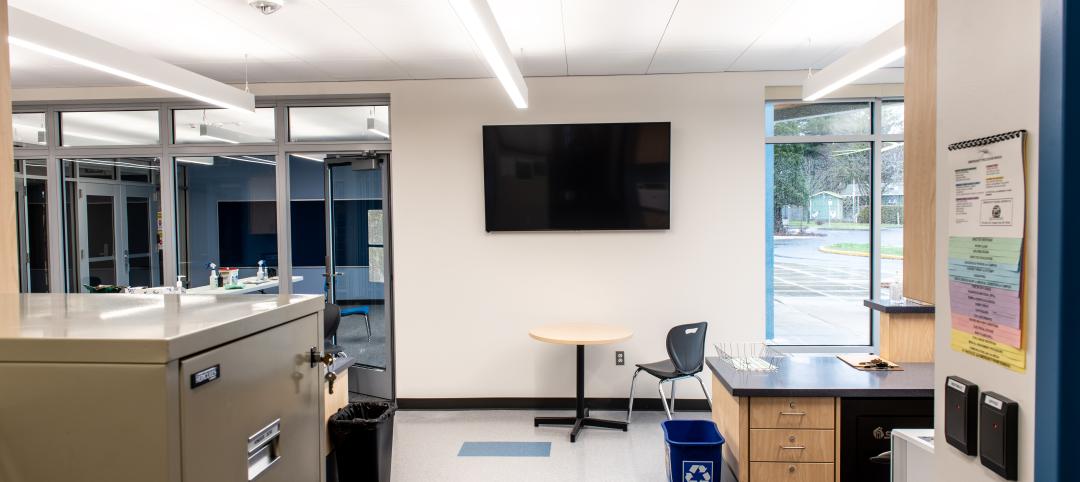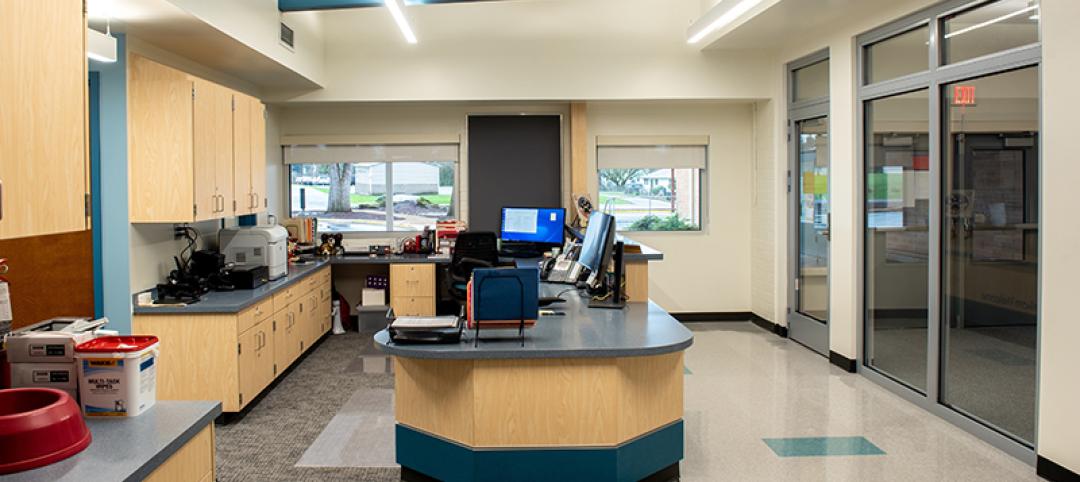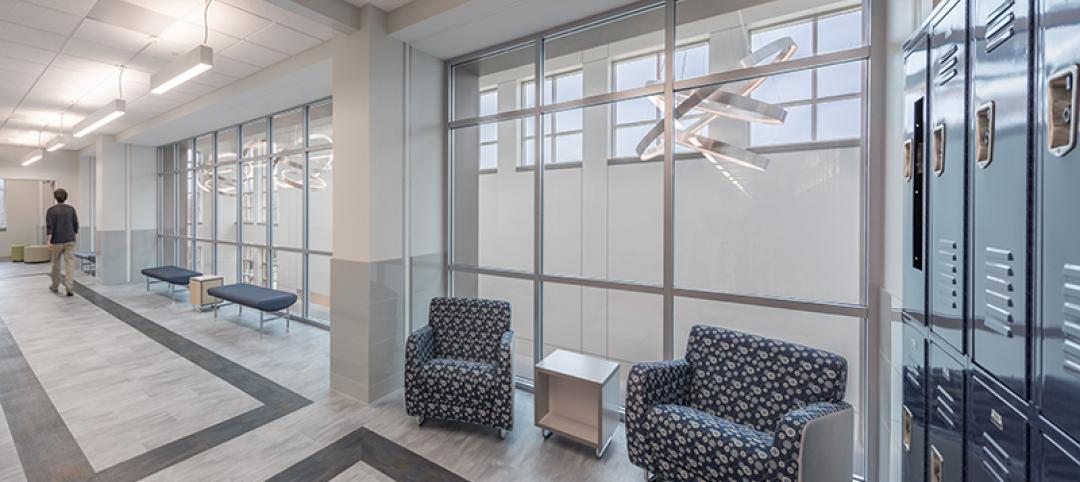Building materials and architectural systems intended to provide added safety and security, such as protection from storms or defense against fire, are often required to meet certain testing standards. These standards simulate how a material or system might perform when subjected to similar situations in application. They help specifiers choose products that will meet or exceed a baseline of building safety.
Model building codes detail what types of rated glazing are necessary in a wide range of contexts. Despite this information, it can sometimes be difficult to know which code-compliant designs are possible given the rating needed for an application. Knowing how to achieve more occupant-centered, code-compliant designs can help projects more readily pass inspections and avoid costly reworks.

Although building code requirements often address fire and other threats to life safety, these codes are not all encompassing. Currently, there is a lack of code-driven standards around safer school design. This can make choosing the right security-rated glazing difficult.
Achieving enhanced security as well as fire- and life-safety code compliance are both crucial components of safer school design. The National Fire Protection Association (NFPA) estimates that an average of over 7,000 fires occur on school grounds annually—and that most of them happen during school hours. Further, the Partner Alliance for Safer Schools, in their K-12 guidelines, recommends that all security improvements meet fire and building code requirements.
As such, knowing the basics of fire-rated glass design and how code requirements can impact security is crucial to effective safer school design.
What are the types of fire-rated glazing and where can it be used
In general, fire-rated glazing is separated into two distinct categories: fire-protective and fire-resistive. Each type is rated in increments of time—most commonly from 20 minutes to 180 minutes—according to fire tests with standard maximum temperatures and pre-determined temperature rise criteria. For both categories, fire-rated glazing and assemblies tested beyond 20 minutes will also need to pass the hose stream test to ensure they stay intact from the pressure of a fire hose and the thermal shock of a drastic temperature change.
Fire-protective glazing blocks the spread of fire and smoke. It is not tested to document its ability to block the spread of conductive and radiant heat. As such, according to model building codes, fire-protective glass is typically limited to windows and openings that are less than 25% of the total wall area as well as specific places within fire door assemblies. The limitations on the use of fire-protective glazing are subject to applicable building code requirements, so it is encouraged that designers consult with local codes to determine how they can best use this material.
Fire-resistive glazing provides an added layer of protection by blocking the spread of fire, smoke and both conductive and radiant heat. Tested to standards such as ASTM E119: Standard Test Methods for Fire Tests of Building Construction and Materials and UL 263: Fire-resistance Ratings, this glazing’s size and use within door and wall assemblies glazing is not limited within model building codes. As a result, fire-resistive glazing can be used in wall applications requiring a 60-minute or greater fire rating that must meet temperature-rise criteria, such as stairwells, exit access corridors, or other fire barriers dividing interior construction.
Additionally, manufacturers, like Technical Glass Products (TGP), can help guide specifiers through building code requirements to help ensure they are choosing the right glazing systems for their intended designs. This is incredibly important because fire- and life-safety requirements can vary by location and when a building was constructed or renovated. In addition to manufacturer guidance and resources, it is encouraged that designers and specifiers refer to local building codes and consult with an Authority Having Jurisdiction (AHJ) when determining code requirements.
In general, fire-rated materials are often required along paths of egress, including walls, openings and fire door assemblies. These materials may also be necessary to support compartmentalization strategies in large interior spaces. Fire ratings may also be required for classroom doors, regardless of the presence of fire mitigation systems in certain jurisdictions, as well as exterior walls and windows in proximity to neighboring buildings or within certain building return conditions.
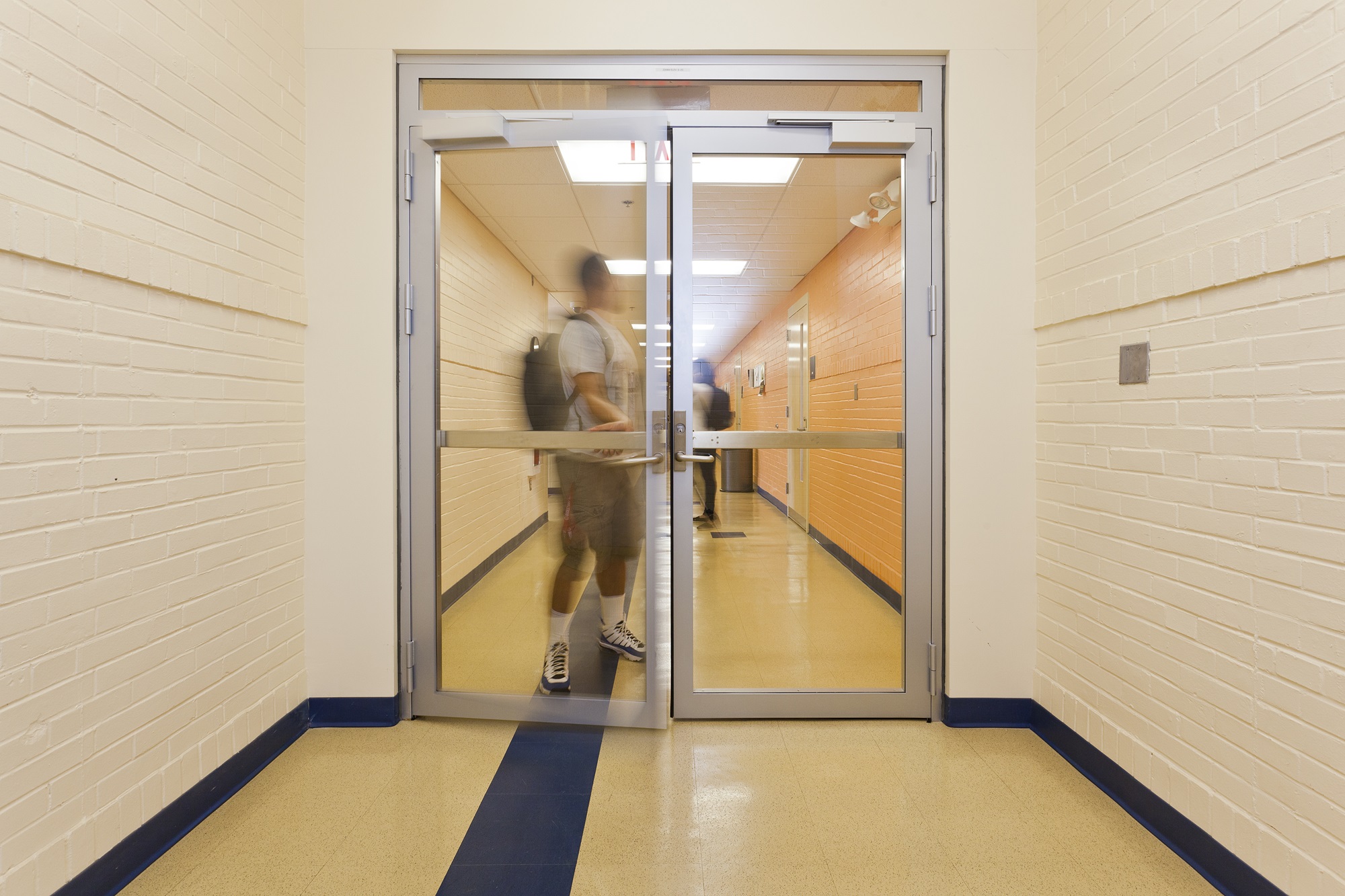
How do fire- and life-safety code requirements impact safer school design?
When a school building plan seeks to provide open sightlines and plenty of access to natural light, building professionals can facilitate code-compliant designs with fire-rated glazing. With its ability to cover a wide range of applications, there is the potential for the use of fire-rated glazing to overlap in areas where best practices for safer school design recommend security-rated products. These areas may include secure entry vestibules, classroom doors and exterior windows.
Due to instances where active shooters triggered fire alarms then attacked occupants as they fled the building, security-rated components may be advantageous in stairwells and on stories above the first floor. In a recent American School & University webinar, Julia Schimmelpenningh notes these applications support strategies to minimize attack perches—places inside a building where active shooters have attacked occupants exiting in response to an alarm.
In these instances, multifunctional, fire-rated glazing is a viable option. It either uses components that are known to be compatible or assemblies that are tested as a complete system, which helps ensure one type of protection does not compromise the other. This is important since many security-rated products are plastic-based and may compromise or entirely negate a fire-rated component’s ability to perform as intended during a fire. Using compatible components or assemblies tested as a full system supports safer school design by limiting the potential for unintended consequences.
Because glass supports open sightlines and access to daylight, safer school designs often benefit from security-, fire- or multifunctional, fire-rated glazing. These materials can promote occupant well-being and support positive student outcomes while also maintaining a baseline of fire and life safety as well as enhanced security. When these systems come from industry-leading manufacturers, like Technical Glass Products (TGP), building professionals can expect they will meet intended performance criteria.
More from Author
Devin Bowman, TGP | Sep 23, 2024
Using Specialty Glazing Central to Achieve Safer School Design
Three schools offer examples of how specialty glazing, such as security- and fire-rated glass, can be used to achieve safer school design.
Devin Bowman, TGP | Aug 19, 2024
Using Multifunctional, Fire-rated Glass to Support Safer School Design
A multilayered approach to safer school design may create design challenges. Multifunctional, fire-rated glass offers a solution.
Devin Bowman, TGP | Jul 22, 2024
Fire-Rated Frames Contribute More Than Code Compliance
Fire-rated design is no longer limited to opaque materials. Fire-rated glass and narrow-profile, fire-rated frames support inspiring and code-compliant designs.
Devin Bowman, TGP | May 20, 2024
How to Bolster Classroom Security with Security-Rated Glazing
Several types of security-rated glazing play different roles in safer school design. This blog looks at three types and how they can enhance classroom security.
Devin Bowman, TGP | Apr 22, 2024
Achieving Safer School Design with Secure Entry Vestibules
Designers can plan secure entry vestibules with security-rated glazing to enhance the effectiveness of their safer school designs.
Devin Bowman, TGP | Aug 16, 2023
Time Barriers: Layering Security Systems for Safe School Design
This blog explains the difference between active and passive protection and why both are necessary for safe school design.
Devin Bowman, TGP | Jul 20, 2023
Passing Marks: Transferring Safer School Design to Other Applications
The benefits of safer school design can improve the safety and security of more general-use projects—especially with the use of passive protection.
Devin Bowman, TGP | Jun 12, 2023
Building Perimeters are Only One Layer in Safe School Design
Hardening entryways and exterior windows is a step toward safer school design. But what more can be done?
Devin Bowman, TGP | May 25, 2023
Safety AND Security: The Importance of Component Compatibility
With proposed and passed laws, it’s important lawmakers and building professionals acknowledge the interplay between fire safety and building security.
Devin Bowman, TGP | Apr 27, 2023
Passing The Test for Safer School Design
Knowing testing protocols can help us understand how to better provide protection in areas that need to address multiple types of life safety threats.

